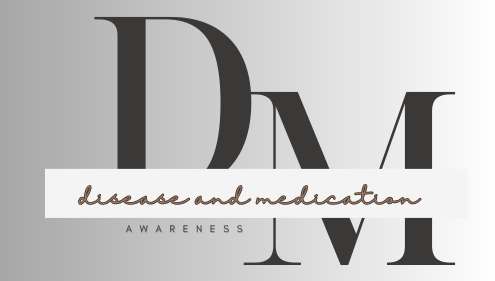Gaucher disease is a genetic disorder due to beta-glucocerebrosidase deficiency, causing glucocerebroside buildup in cells, mainly macrophages. This lipid buildup affects various organs and tissues, resulting in a spectrum of symptoms and severity across different types of the disease.
Types of Gaucher Disease
- Type 1 Gaucher Disease:
- Symptoms: Typically manifests with skeletal abnormalities such as bone pain, fractures, and osteopenia. Hepatosplenomegaly (enlargement of liver and spleen) is also common.
- Diagnosis: Confirmed through enzyme assays showing reduced glucocerebrosidase activity and genetic testing for mutations in the GBA gene.
- Treatment: Mainly managed with enzyme replacement therapy (ERT), which involves infusions of recombinant glucocerebrosidase to reduce substrate accumulation.
- Enzyme Deficiency: Deficiency of glucocerebrosidase enzyme.
- Type 2 Gaucher Disease:
- Symptoms: Characterized by severe neurological involvement in addition to systemic symptoms. Rapid progression is typical.
- Diagnosis: Similar diagnostic approach as type 1.
- Treatment: Treatment options are limited, and management focuses on supportive care.
- Enzyme Deficiency: Severe deficiency of glucocerebrosidase.
- Type 3 Gaucher Disease:
- Symptoms: Intermediate between type 1 and type 2, with systemic involvement and progressive neurological symptoms that develop over time.
- Diagnosis: Similar to type 1 and type 2, but symptoms may guide specific testing for neurological manifestations.
- Treatment: Managed similarly to type 1, with ERT playing a crucial role in symptom management.
- Enzyme Deficiency: Partial deficiency of glucocerebrosidase.

Gaucher Disease Symptoms
Symptoms vary widely but commonly include bone pain, easy bruising, fatigue, anemia, and organ enlargement (liver, spleen). Neurological symptoms in types 2 and 3 may include seizures, cognitive impairment, and movement disorders.
Gaucher Disease Diagnosis
Diagnosis involves a combination of clinical evaluation, imaging studies (radiology), enzyme assays to measure glucocerebrosidase activity, and genetic testing to identify mutations in the GBA gene. Radiopaedia often provides valuable insights into radiological findings associated with bone lesions and organomegaly in Gaucher disease.
Gaucher Disease Treatment
Enzyme Replacement Therapy (ERT) is the foundation of treatment for Gaucher disease. By supplying exogenous glucocerebrosidase, ERT reduces the accumulation of glucocerebroside in cells, alleviating symptoms and preventing disease progression. Regular monitoring of response to therapy and potential complications is essential.
Gaucher Disease Enzyme Deficiency and Beta-Glucocerebrosidase
Beta-glucocerebrosidase deficiency results from mutations in the GBA gene, impairing the enzyme’s ability to break down glucocerebroside into glucose and ceramide. This metabolic defect leads to the accumulation of glucocerebroside within macrophages throughout the body, contributing to the multisystemic nature of it.

Gaucher Carrier
Individuals who carry one mutated copy of the GBA gene but do not exhibit symptoms are known as Gaucher carriers. Carriers have a 50% chance of passing the mutation to their offspring, potentially resulting in it if both copies of the GBA gene are mutated.
Pathophysiology and Biochemical Basis of Gaucher Disease
Gaucher disease is characterized by a deficiency in the enzyme beta-glucocerebrosidase, which normally breaks down glucocerebroside into glucose and ceramide. This deficiency leads to the accumulation of glucocerebroside primarily in macrophages, particularly in the liver, spleen, bone marrow, and other organs. The buildup of these lipid-laden macrophages, known as Gaucher cells, results in the enlargement of the liver and spleen, skeletal abnormalities, and potentially affects other organ systems.
The pathophysiology of it involves a cascade of events starting from the genetic mutation in the GBA gene, which codes for beta-glucocerebrosidase. This mutation impairs the enzyme’s ability to cleave glucocerebroside, leading to its accumulation. The accumulation of glucocerebroside in Gaucher cells contributes to cellular dysfunction, inflammation, and organomegaly observed in affected individuals.
Understanding the biochemical basis of it is crucial for developing targeted therapies, such as enzyme replacement therapy (ERT), which aims to supplement the deficient enzyme and reduce substrate accumulation. Ongoing research continues to explore the molecular mechanisms underlying the disease to improve treatment outcomes and quality of life for patients with this disease.
Conclusion
Gaucher disease presents a complex clinical picture with significant variability in its manifestations and severity. Early diagnosis through a comprehensive approach involving clinical evaluation, biochemical testing, and genetic analysis is crucial for timely intervention. With advancements in treatment modalities such as ERT, the prognosis for individuals with Gaucher disease has significantly improved, emphasizing the importance of ongoing research and multidisciplinary care in managing this rare genetic disorder.
